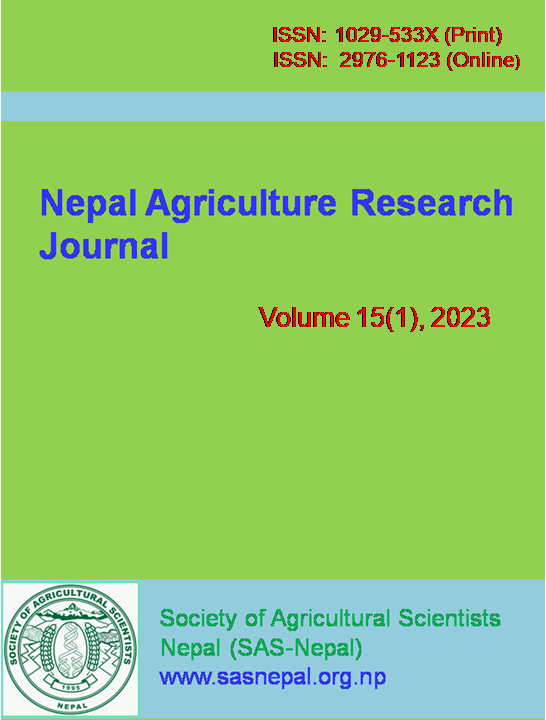Rice demand and production projections for 2050: Opportunities for achieving self-sufficiency in Nepal
DOI:
https://doi.org/10.3126/narj.v15i1.51926Keywords:
Climate change, food security, productivity growth, rice, self-sufficiencyAbstract
Rice is a major food, contributing 67% of cereal consumption in Nepal. It is playing a substantial role in food and nutritional security. Rice production is not sufficient to meet domestic consumption, so its import has been increasing. This study aims to explore whether Nepal can be self-sufficient in rice production in the current context of increasing rice demand and changing climate. We assessed the degree to which Nepal can be self-sufficient in rice production by the years 2030, 2040, and 2050, evaluating 12 different scenarios of demand driven by production, population growth, income, and climate change effect. We used compound growth rate estimation for analyzing the growth of rice production and population growth over time. Auto-regressive regression model was used to analyze the relationship of rice import and demand with domestic production, income, and population. A significant (p=0.000) positive impact of income on the import of rice was estimated, whereas significantly (p=0.000) higher impact of production on demand was estimated compared to income. Based on current rice productivity growth of 1.47% and population growth of 1.3% per year over three decades, the country will not achieve self-sufficiency until 2050.The situation would be further worsened in climate change scenarios. However, integrating the population growth rate of the last decade (0.57% per annum) with two productivity growth rate scenarios (current and (ii) 5% annual increment), the country can be self-sufficient by 2040. Based on different scenarios, the estimated demand can be met by increasing current productivity by at least 27–43% by 2030 and 42–85% by 2050. The study identified major gaps and opportunities in the rice production systems of Nepal and provided evidence-based solutions to meet the future demands in the context of increasing population and income, declining land availability, and high vulnerability to climate change.
Downloads
Downloads
Published
How to Cite
Issue
Section
License
Copyright (c) 2023 Timsina et al.

This work is licensed under a Creative Commons Attribution-NonCommercial-NoDerivatives 4.0 International License.
This license allows reusers to copy and distribute the material in any medium or format in unadapted form only, for noncommercial purposes only, and only so long as attribution is given to the creator.




